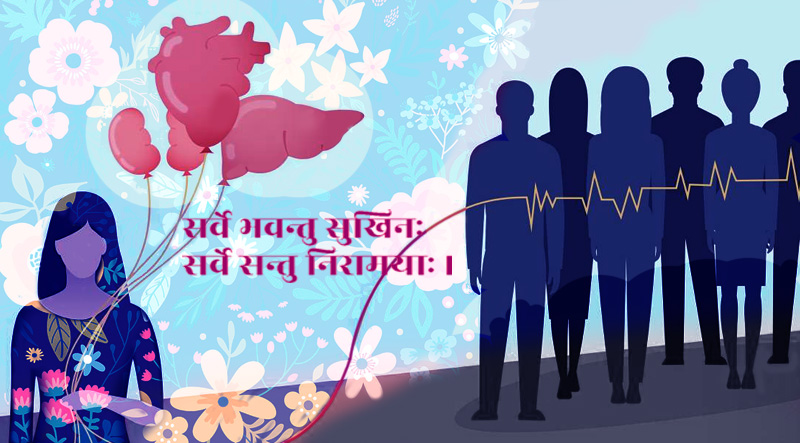Donating Life After Death

 Shri Tilak Vij |
The advent of modern society has given birth to many life-style diseases. With the new scientific and information technology developments, there has been sea-change in everyday life of the people. Increase in profession related travels, stressed work schedules, change in dietary habits and curtailed rest hours have a direct bearing on physical and mental health of the people. All this has an adverse effect on the vital organs of human body.
Modern day diseases impact kidneys, heart, liver, pancreas, intestines, lungs, bones, bone-marrow, skin and corneas. Failure of these organs is life-threatening. Once damaged, these organs have to be replaced by the healthy ones. The source of healthy organs is by donations by living beings or after their death.
Donation of organs is encouraged as a charitable and social act. The first ever mention of organ donation in the world reminds us about Maharishi Dadhichi.
Maharishi Dhadhichi who is also known as Dadhyancha is revered amongst the greatest of sages and is portrayed as an example that no sacrifice is too great when the result is the good of the world. His bones are used as a symbol on India’s highest award for gallantry “Param Vir Chakra”. He is credited with giving up his life in order to allow the Devatas (Gods) to make weapons from his bones to defeat the demons (Asuras), recapture heaven (Svargalok) and release all the world’s water for all living beings.
Following the footsteps of Maharishi Dadhichi, ‘ Dadhichi Dehdan Samiti’ was founded by Shri Alok Kumar who is the Patron of the Samiti and International Working President of Vishwa Hindu Prishad. The Samiti has been promoting the cause of organ donations and creating awareness amongst the masses about this holistic mission for the last twenty five years.
Organ donation and transplant is one of the greatest medical marvels of the twentieth century which has saved the lives of several patients. But the disparity between the huge demands for the organs and their poor supply is the main issue. The total organ donation shortage in our country can be met even if only few victims involved in fatal accidents serve as organ donors.
There is a poor organ donation rate - 0.26 per million in India, compared to some of the better performing countries such as Croatia’s 36.5, Spain’s 35.3 and America’s 26 per million, respectively. There are three different kinds of organ donors - Live donors, Cadaveric or brain death donors and Natural death donors.
Legendary Dr. Randeep Guleria, Director, AIIMS, New Delhi says there is a ‘huge gap’ in the demand and supply of Human Organs and Tissues for transplant in the country. He adds that myths prevalent in this domain must be busted to ensure that lives are saved by timely availability of vital body parts. Last year, CRPF, the largest para military force in the country handed over 79,572 Organ Donation Pledges undertaken by its personnel to the then Union Health Minister, Shri Harsh Vardhan.
The noble approach adopted by the CRPF heroes can set an example for other institutions also. This would reduce the gap between demand and supply of organs which may be helpful in saving the life of many people whose life is endangered because of damaged vital organs.
Organ donation in India is slowly rising to take off. The main reason behind this slow take off is lack of awareness. Awareness should increase in all levels, namely : Community based awareness, Public/Patient -based awareness, Hospital- based awareness and Government-initiated awareness.
Legal aspects of Organ Donation are incorporated in ‘The Transplantation of Human Organ Act (THOA) 1994’ which was enacted to provide a system of removal, storage and transplantation of human organs for therapeutic purposes and for the prevention of commercial dealings in human organs. The Government of India initiated the process of amending and reforming THOA 1994 and consequently, The Transplantation of Human Organs (Amendment) Act 2011 was enacted, wherein Tissues have been included along with the organs, registration of Retrieval Centres has been made compulsory and National Human Organs and Tissue Removal and Storage Network and National Registry had been envisaged.
One donation from a deceased donor whose brain gave way before their heart, can save lives up to eight people who are suffering from end stage organ failures.
This is how one can Donate, Life After Death,’and in this charity is hidden, the basic purpose of ‘Sarve Bhavantu Sukhinah,Sarve Santu Niraamayaah.’

